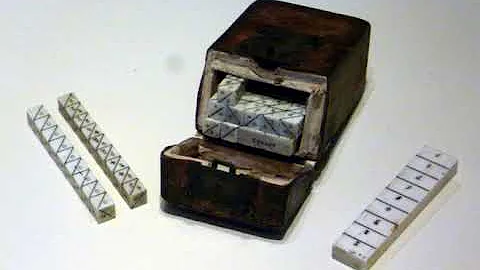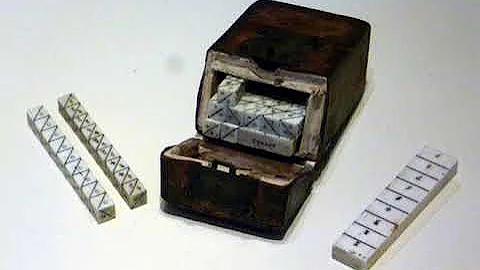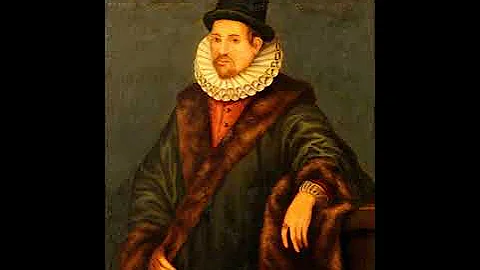William Gilbert, British physician, physicist, and natural philosopher. He passionately opposed the prevailing Aristotelian philosophy and academic methods of university teaching. Today he is mainly remembered for his work "On Magnetism" (1600) and is considered one of the originators of the word "electricity". He is considered by some to be the father of magnetism and . The unit of magnetic potential is commemorated by his name Gilbert.


William Gilbert (1544-1603)
Biography
In 11544, William Gilbert (William Gilbert, 1544-1603) was born in a middle-class family. His father was a lawyer (recorder) and citizens of Colchester. William Gilbert was the eldest of five children from his first marriage (his father was married twice). Gilbert began studying at St. John's College, Cambridge, in 1558. He received his BA in 1561, became a lecturer in the college in 1564, and received his MD in 1569. Afterwards, he became a senior fellow of his college. In the mid-1570s, he settled in London and became a doctor. In 1577 he received a letter with a coat of arms. Before 1581 he became a member of the Royal College of Physicians, studied the pharmacopoeia , and became one of the most respected doctors in London around 1581.
Court Physician
In 11588 he became one of four doctors in the College who looked after the health of the Royal Navy on behalf of the government. In 1600 he became President of the Royal College of Physicians. In 1603, after the death of Queen Elizabeth I, he received the position of court physician from her at the court of King James I. He lived at Wingfield House in St Peter's Hill, London, probably as his stepmother's heir, and had his laboratory there. Gilbert died in London on November 30, 1603. He probably died of the plague, leaving his instruments and books to the Royal College of Physicians. The manor, his library and his house, like the Royal Academy, were destroyed by the Great Fire of London in 1666.

William Gilbert demonstrated his experiments before Queen Elizabeth, A. Oakland Hunter
Research on Magnetism
His most important work is De Magnetisque Corporibus, et de Magno Magnete Tellure; On the Magnet and Magnetic Bodies, and on the Great Magnet the Earth). This is the first summary treatment of magnetism since Petrus Peregrinus in the 13th century. In this work, published in 1600, Gilbert described many experiments with his model of the Earth, called "Terrella" ( Latin for "little Earth"). From these experiments, he concluded that the Earth itself was magnetic, which was why the compass pointed north. While some of his contemporaries believed that the tip of the compass was attracted to Polaris, he convincingly showed that the Earth as a whole must be viewed as a single magnet with two poles. He also derived this conclusion from the magnetic needle 's tilt discovered by George Hartmann and published by Robert Norman (The New Attractive, 1581).
The decisive factor, however, was his own experiments with spherical magnets. According to his imagination, magnetism is the "soul" of the earth, implanted by God. He divided a range of influence for each magnet, which was the pioneer of the concept of magnetic field. He suggested that mariners should record deviations of the magnetic needle from the direction of the North Pole and give instructions to this effect.
Linking the Universe to the Power of Magnets
Like Peregrinus, Gilbert believed that rotation was a magnetic motion. In the sixth volume of his De Magnete, he transferred his philosophy of magnetism to the universe, arguing that the daily rotation of the Earth was due to magnetism.He attempted to attribute tides and precession to magnetism, but the argument was weak, and Volume Six was criticized by Francis Bacon and others. Assuming further that Gilbert was the first to believe that the center of the Earth was iron, he believed that an important and relevant property of magnets was that they could be cut, each forming a new north-south magnet. Gilbert disagreed with the idea of a fixed stellar celestial sphere with fixed distances, stating that "fixed" stars were at distant variable distances rather than fixed on an imaginary sphere.

Gilbert's concept of the solar system
In the Physiologia, he denied the existence of Aristotle's four elements and replaced them with the single earth element . Its characteristic is that it is magnetic. The non-magnetic parts of the Earth are degenerate forms of the Earth, and this basic element usually has a stinky smell. According to Gilbert, other celestial bodies were similar in structure, even though he explicitly stated the moon. According to Gilbert, the moon is a miniaturized Earth, with oceans (brighter areas) and continents. The sun, like a star, is a luminous object, and there are five non-luminous planets orbiting the sun, all of which are driven by magnetic fields to move in their orbits. He discusses the views of Nicolaus Copernicus and Giordano Bruno, but does not explicitly argue for or against a heliocentric worldview.
The study of electricity
It is thought that the word "electricity" was first used by Sir Thomas Browne in 1646, possibly derived from Gilbert's 1600 New Latin electricus, meaning "like amber". He realized that friction with these objects removed the so-called "effluvium," giving the objects an attractive effect. In his book, he also used amber to study static electricity; amber was called elektron in Greek , so Gilbert decided to call its action electric force. He invented the first electroscope in the form of a rotating needle, which he called a versorium. William Gilbert also pointed out that electricity and magnetism are not the same thing.
Gilbert's other works
In 11651, his half-brother William Melford Gilbert collected his unfinished works under the title A New Philosophy Concerning Our Sublunar World (De Mundo Nostro Sublunari Philosophia Nova; New Philosophy about our sublunar world), has a great influence on Francis Bacon and Thomas Harriot. They were published in Amsterdam in 1651. It was not completed, but the first part continued the same cosmological ideas and terminology from Physiologiae nova contra Aristotelem (circa 1590s) to On Magnetism. The second part "Nova meterorologia contra Aristotelem" (Nova meterorologia contra Aristotelem) probably originated as a separate work and dealt with comets , Milky Way , rainbows, clouds, winds, tides and oceans , the origin of rivers, etc. . However, these works left far less impact than his On Magnetism, which proved to be seminal in the scientific study of the latter.














